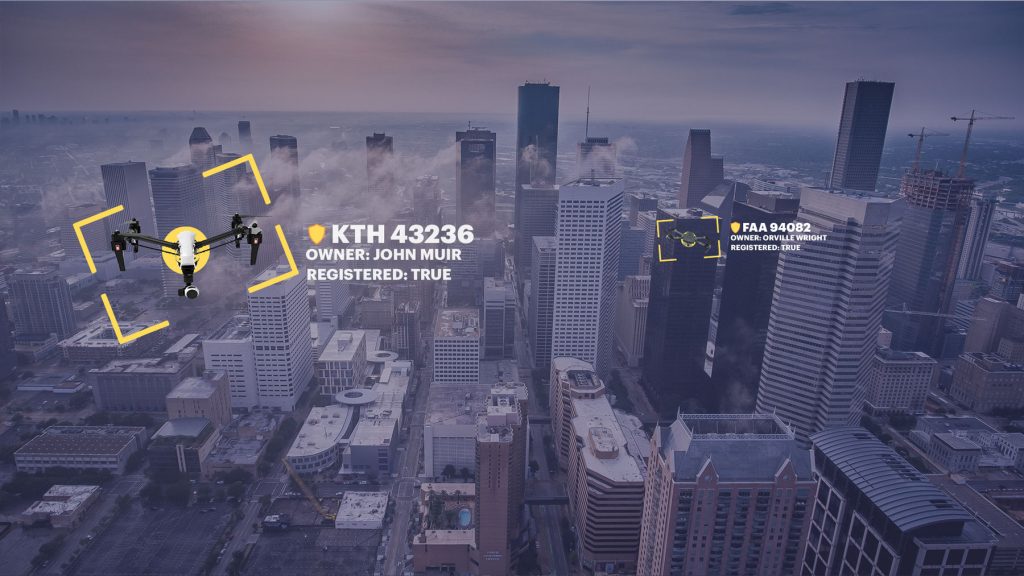Biden’s Counter-UAS Plan Proposes Expanding Drone Tracking Authority to State and Local Governments
BY Zacc Dukowitz
11 May 2022The FAA projects that there will be over two million drones being used in the U.S. by 2024.
That’s a lot of drones. And a very small number of them will become “rogue drones”—drones used recklessly or illegally.
From smuggling contraband into prisons, to flying over crowded sports stadiums, to disrupting flights at airports, bad behavior of some amount will inevitably accompany the growth of drone adoption.
Given the number of drones we already have in the U.S., these incidents are pretty uncommon, but they’re still worrisome. Further, state and local authorities do not have the authority to use drone detection or drone jamming devices, leaving some of them feeling helpless in the face of this behavior.
But President Biden wants to change this.
In a new plan called the “Domestic Counter-Unmanned Aircraft Systems National Action Plan” he proposes expanding the ability of state and local authorities to use Counter UAS (CUAS) tools for detecting drones.
The path forward, according to the plan, is for Congress to enact legislation that closes loopholes in the existing law, and empowers government and law enforcement at all levels to take action.
[This plan is] vital to enabling DHS and our partners to have the necessary authorities and tools to protect the public, the President and other senior officials, federal facilities, and U.S. critical infrastructure from threats posed by the malicious and illicit use [of drones].
– Alejandro Mayorkas, Secretary of the Department of Homeland Security
Eight Recommendations
Biden’s CUAS plan lays out eight key recommendations, with the first one being by far the largest—it proposes new laws, expanded authorities, and a six-year pilot program.
All but one of the recommendations focus on defensive tactics against rogue drones that are referred to as “UAS mitigation activities”—meaning, detecting, jamming, or even destroying these drones.
Only the seventh recommendation proposes legislation to criminalize the actions of the pilot, rather than defensive actions that can be taken as protection from these pilots.
Here are the recommendations.
1. New Laws, Expanded Authority, and a Pilot Program
- New laws—expand the list of CUAS tools and authorities that can act against rogue drones, including expanding the authority of federal agencies like the Department of Homeland Security and of Justice, and the CIA.
- Expanded authority—expand drone detection authority for state and local law enforcement agencies and owners of critical infrastructure.
- Pilot program—create a six-year federal pilot program headed by Homeland Security and the Justice Department to support state and local authorities and infrastructure owners in learning how to use authorized CUAS tools.
2. Create a List of Drone Detection Equipment
Just as the Pentagon has an established Blue UAS list of approved drone vendors, Biden proposes creating a list of approved equipment for detecting UAS that can be used to guide purchasing decisions.
3. Support for Critical Infrastructure
Create processes for owners/operators of critical infrastructure like power plants, water facilities, and transportation organizations to use drone detection equipment in partnership with federal and/or local authorities.
4. Create a CUAS Training Center
Create a training center where both federal and state/local employees can learn how to use CUAS, with the added goal of promoting collaboration among different levels of government and law enforcement.
5. Create a UAS Incident Database
Create a repository for storing all rogue drone incidents in the U.S.
6. CUAS Research and Development
Create a federal program to test, research, and develop CUAS technology.
7. Further Criminalize Rogue Drone Behavior
Create new legislation that closes loopholes in federal laws and clearly establishes what’s legal/illegal when it comes to drone use, and add teeth to this legislation by establishing adequate penalties.
8. Enhance International Cooperation
Establish and strengthen international partnerships to improve our CUAS measures.

A drone jammer | Credit: DroneDefender
What Does This Mean for Commercial Drone Pilots?
On its face, the idea of empowering more authorities to detect drones seems like a good thing. Drone detection tools already exist, so why not let law enforcement use them?
But one potential concern with big, sweeping proposals like this CUAS plan is that it could inadvertently encourage overreach.
If, for example, a police department is already inclined to view most drone operations as suspect, and doesn’t especially like the idea of a reporter or surveyor flying in a way that could allow them to see someone’s private property, these measures may embolden officers to focus on detecting—and even jamming or destroying, if this becomes allowed—drones that are operating in a perfectly legal manner.
[Related read: Drone Jammer 101—An Inside Look at Counter UAS Technology for Drone Pilots]
In a recent case in Texas, a state law was struck down that had made it almost impossible for reporters to use drones in a legal manner in their reporting.
An emphasis on CUAS tools and the general fear of rogue drones could lead to more state laws like this that, however much in conflict they may be with federal law, still must be battled out in court, creating a general freezing out of legal commercial drone operations.
It’s also worth noting that the unveiling of this CUAS plan comes at a unique moment—the FAA’s new Remote ID requirement will go into effect in September of this year, making it mandatory for drone operators to broadcast their location.

Credit: Kittyhawk
This means that, as CUAS tools are put into the hands of state and local law enforcement, those authorities will be able to locate not only any drone in their area using new detection tools provided through the CUAS plan, but also the pilot themselves. And that ability could lead to privacy concerns among commercial drone pilots, as well as further concerns of overreach.




